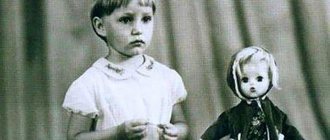People who lived in Russia at the end of the 19th and beginning of the 20th centuries thought little about what their image would be in the eyes of their distant descendants. Therefore, they lived simply - they loved, betrayed, committed meanness and selfless acts, not knowing that a hundred years later some of them would be put on a halo on their heads, and others would be posthumously denied the right to love.
Matilda Kshesinskaya inherited an amazing fate - fame, universal recognition, love of the powers that be, emigration, life under German occupation, poverty. And decades after her death, people who consider themselves highly spiritual individuals will shout her name on every corner, silently cursing the fact that she ever lived in the world.
"Kshesinskaya 2nd"
She was born in Ligov, near St. Petersburg, on August 31, 1872. Ballet was her destiny from birth - her father, Pole Felix Kshesinsky , was a dancer and teacher, an unrivaled mazurka performer.
Mother, Yulia Dominskaya , was a unique woman: in her first marriage she gave birth to five children, and after the death of her husband she married Felix Kshesinsky and gave birth to three more. Matilda was the youngest in this ballet family, and, following the example of her parents and older brothers and sisters, she decided to connect her life with the stage.
At the beginning of her career, the name “Kshesinskaya 2nd” will be assigned to her. The first was her sister Julia, a brilliant artist of the Imperial Theaters. Brother Joseph, also a famous dancer, will remain in Soviet Russia after the revolution, receive the title of Honored Artist of the Republic, and will stage performances and teach.
Felix Kshesinsky and Yulia Dominskaya. Photo: Commons.wikimedia.org
Joseph Kshesinsky will be spared repression, but his fate, nevertheless, will be tragic - he will become one of the hundreds of thousands of victims of the siege of Leningrad.
Little Matilda dreamed of fame and worked hard in her classes. Teachers at the Imperial Theater School said among themselves that the girl had a great future, if, of course, she found a wealthy patron.
Matilda Kshesinskaya and Nicholas II
Nicholas II and Matilda Kshesinskaya
So, they first met at Matilda’s graduation party. We have already mentioned that the girl was flattered by the praise of Alexander III, but she was even more pleased by the “spark” that ran between her and the future emperor.
Many years later, in her memoirs, Kshesinskaya wrote that from the first second she fell in love with Nicholas and saw in him not the future emperor of Russia, but a young man with kind blue eyes. Is it so? It’s hard to say, because her later life showed that she was not at all a naive simpleton.
The future emperor also kept a diary, but, judging by the entries, he did not experience much delight from the first meeting with the girl - he was bored at a dinner with young college girls, where his father forced him to come.
In the following months, Matilda saw Nicholas only a few times, as he took part in government affairs and often went abroad. But when they were nearby, Kshesinskaya tried to catch his eye at every opportunity. And gradually the Tsarevich became interested in her.
The high society of St. Petersburg loved gossip, so the Tsarevich's sympathy for the young ballerina did not go unnoticed. They gossiped about their relationship, and it was said that it was no coincidence that Kshesinskaya, who had recently joined the troupe, began to receive leading roles in performances, while famous dancers were left with nothing.
Six months later, in January 1892, Nikolai and Matilda ended the candy-bouquet period and their relationship moved into another phase - he began to stay in her apartment at night. This relationship lasted for a couple of years. Nicholas understood that sooner or later they would have to separate, since the future emperor would have to enter into an “equal marriage”, and there was no place for an “accessible ballerina” in it. But did Matilda understand this, or was she hoping for something?
When in 1894 Nicholas was introduced to the Princess of Hesse, known to us as Alexandra Feodorovna, he broke off relations with Kshesinskaya. Of course, the ballerina was terrified, since the patronage of the royal family guaranteed her a cloudless career. But she also wrote that she loved Nikolai very much, so she was worried about her lost love, and her career had nothing to do with it. Believe it or not is up to you. But for strong love, she very soon consoled herself and found a replacement for him, again from the Romanov family! As if there were no other men worthy of her anymore.
Fateful dinner
The life of Russian ballet during the Russian Empire was similar to the life of show business in post-Soviet Russia - talent alone was not enough. Careers were made through bed, and this was not really hidden. Faithful married actresses were doomed to be the foil for brilliant, talented courtesans.
In 1890, 18-year-old graduate of the Imperial Theater School Matilda Kshesinskaya was given a high honor - Emperor Alexander III and his family were present at the diploma performance.
Ballerina Matilda Kshesinskaya. 1896 Photo: RIA Novosti
“This exam decided my fate,” Kshesinskaya will write in her memoirs.
After the performance, the monarch and his retinue appeared in the rehearsal hall, where Alexander III showered Matilda with compliments. And then at the gala dinner the emperor gave the young ballerina a place next to the heir to the throne, Nicholas.
Alexander III, unlike other representatives of the imperial family, including his father, who lived in two families, is considered a faithful husband. The emperor preferred another entertainment for Russian men to walking “to the left” - consuming “little white” in the company of friends.
However, Alexander saw nothing wrong with a young man learning the basics of love before marriage. That’s why he pushed his phlegmatic 22-year-old son into the arms of an 18-year-old beauty of Polish blood.
“I don’t remember what we talked about, but I immediately fell in love with the heir. I can see his blue eyes now with such a kind expression. I stopped looking at him only as an heir, I forgot about it, everything was like a dream. When I said goodbye to the heir, who sat through the entire dinner next to me, we no longer looked at each other the same way as when we met; a feeling of attraction had already crept into his soul, as well as into mine,” Kshesinskaya wrote about that evening.
Matilda Kshesinskaya. Fouette in bed with the heir to the throne
Matilda Kshesinskaya Photo: Public domain The ballet future of the youngest daughter of the Polish dancer Felix Kshesinsky was predetermined in advance. But no one imagined that beautiful slender legs would take the girl not only to the top of the theatrical Olympus, but also to the highest spheres of Russian government.
Fate was favorable to the young graduate of the Imperial Theater School, Matilda Kshesinskaya. In the spring of 1890, at a graduation viewing, Emperor Alexander III liked the ballerina so much that at a gala dinner he seated her next to his eldest son, the 22-year-old heir to the throne, Nicholas. “I don’t remember what we talked about, but I immediately fell in love with the heir. I can see his blue eyes now with such a kind expression. I stopped looking at him only as an heir, I forgot about it, everything was like a dream. When I said goodbye to the heir, who sat through the entire dinner next to me, we no longer looked at each other the same way as when we met; a feeling of attraction had already crept into his soul, as well as into mine,” Kshesinskaya recalled about that feast in her memoirs.
The 18-year-old ballerina was passionate about continuing her promising relationship. However, the phlegmatic crown prince was either too shy or too busy with state affairs. For more than a year he hardly made himself known. Only at the beginning of 1892 did the servants report to the ballerina about the visit of some “hussar Volkov”. Nikolai stood on the threshold. Their first night was stormy. Meetings became regular; not only the entire high society, but even St. Petersburg cab drivers knew about the visits of “Hussar Volkov” to Matilda. The secret police, naturally, were also aware of their relationship. One day, the mayor himself burst into Kshesinskaya’s boudoir: the emperor urgently needed to see his son, and the governor had to pick the heir to the throne out of the bed of his mistress. Kshesinskaya's theatrical career took off sharply. Despite the fact that the chief choreographer Maurice Petipa did not really like her dancing, he was forced to give her the main roles - the heir’s patronage extended to the entire Mariinsky Theater, and no one wanted to upset such a benefactor.
No matter how Kshesinskaya exaggerated Nikolai Alexandrovich’s love for her in her memoirs, judging by the development of events, he did not lose his head. In 1894, before the official engagement to Princess Alice of Hesse, the future Empress Alexandra Feodorovna, he said goodbye to his passion. The heir to the throne understood perfectly well that youthful amusements are one thing, but marital fidelity is quite another. The ballerina's lover became a wonderful family man.
Matilda grieved, but not for very long. She found a new partner (and not on the ballet stage) again among the members of the ruling dynasty. The 25-year-old Grand Duke Sergei Mikhailovich was her former lover’s cousin. He had a very strong feeling for the ballerina, which stood the test of time and Matilda’s frivolity. She was very loving, although her hobbies rarely went beyond the imperial family. In 1901, she began an affair with Grand Duke Vladimir Alexandrovich, and a little later with his son, Andrei Vladimirovich, who was seven years younger than Kshesinskaya. Having started a relationship with “Andryusha,” Matilda did not interrupt relations with “Seryozha,” skillfully maneuvering between the two grand-ducal families and receiving generous gifts from both sides.
At the end of the same 1901, while traveling around France, Kshesinskaya discovered that she was pregnant. She could only guess who the father of the unborn child was, and paternity tests did not yet exist. Yes, he was not required in this case - both grand dukes were ready to recognize the boy born on June 18, 1902 as their son. Kshesinskaya at first wanted to name her son Kolya, but this might not have pleased Nicholas II, who had already become Emperor. Therefore, the boy became Vladimir Sergeevich. It seems that she chose his father simply because of his seniority.
Book cover Publisher: Peter
In 1904, Kshesinskaya left the Mariinsky Theater troupe, but continued to dance the main roles on its stage under separate contracts with record fees. No one in the ballet world dared to contradict her. Her conflict with the director of the Imperial Theaters, Prince Volkonsky, over some costume ended in a personal reprimand to the prince from the emperor himself, followed by her resignation.
Despite the fact that Kshesinskaya not only rested on her laurels, but constantly improved her ballet skills (she was the first Russian ballerina to perform 32 fouettés in a row), she was poorly known outside of Russia. In 1911, she danced in Swan Lake during Diaghilev's Russian Seasons in London. The initiator of this cooperation was Sergei Diaghilev. He hoped, through the mediation of Matilda, to spend his seasons in St. Petersburg and avoid his lover Vaslav Nijinsky, who became liable for military service, from serving in the army. The idea, for which Matilda did not really bother, failed. Diaghilev was not invited to the capital of the empire, and the title of deserter was added to Nijinsky’s regalia. After this story, Diaghilev’s trusted servant seriously suggested poisoning Kshesinskaya, who was guilty of all mortal sins.
During foreign tours, Matilda was inevitably accompanied by one of her high-born lovers. Nevertheless, the ballerina managed to party here too. The rage of the great princes knew no bounds. But it didn’t fall on their flighty friend. In Paris, Andrei Vladimirovich challenged the young ballerina Pyotr Vladimirov to a duel and shot off his nose, not what you thought. The poor fellow's olfactory organ was pieced together by French doctors.
Kshesinskaya moved to her own luxurious mansion in St. Petersburg in 1906. Even the astronomical fees would not be enough to build this palace. Evil tongues said that Sergei Mikhailovich, a former member of the State Defense Council, stole large chunks from the military budget to give to his mistress. These rumors came back to haunt the ballerina during the First World War, when the Supreme Commander-in-Chief, Grand Duke Nikolai Nikolaevich, justified defeat at the fronts by saying that “Matilda Kshesinskaya influences artillery affairs and participates in the distribution of orders between various companies.”
But the fate of the ballerina was influenced not by accusations of corruption, but by the February Revolution. The mansion left by Kshesinskaya was occupied by Bolshevik organizations. A couple of weeks later, not a trace remained of the rich decoration, and Lenin, who had returned from emigration, began making speeches from the high balcony. Matilda tried to return the taken property and went to court, and one of the defendants was “candidate of law V.I. Ulyanov (literary pseudonym - Lenin).” On May 5, 1917, the court decided to return the mansion to its rightful owner, but the Bolsheviks wanted to sneeze at the decision of the magistrate. In July, Kshesinskaya and her son left Petrograd forever and went to Kislovodsk, where Andrei Vladimirovich was waiting for them. “A feeling of joy to see Andrei again and a feeling of remorse that I was leaving Sergei alone in the capital, where he was in constant danger, were fighting in my soul. In addition, it was hard for me to take Vova away from him, whom he doted on,” she wrote in her memoirs.
After long adventures and misadventures in 1920, Andrei, Matilda and Vova reached the Kshesinskaya mansion on the Cote d'Azur. A year later, the old lovers finally got married legally, and Volodya, officially adopted, became Andreevich instead of Sergeevich. Matilda Kshesinskaya will live a very long life, receive the title of His Serene Highness Princess Romanovskaya-Krasinskaya, teach ballet to French girls, meet with Gestapo chief Müller to free her son from a concentration camp, write memoirs about her turbulent youth, outlive her husband by 15 years and, without living a few months before the age of a century, in 1971 he will rest in the cemetery of Sainte-Genevieve-des-Bois near Paris.
By that time, her two high-born lovers were long dead. Their lives ended in the Urals in 1918. Nicholas II and his family were shot in Yekaterinburg. Grand Duke Sergei Mikhailovich, along with other members of the imperial family, was taken to Alapaevsk. On July 18, the Reds decided to execute the prisoners and took them to the old mine. The prince resisted and was shot. We can say that he was lucky - his relatives were thrown into the adit alive. When, a month and a half later, the whites who occupied Alapaevsk raised the bodies upstairs, it was discovered that in Sergei Mikhailovich’s hand was clutched a gold medallion with a portrait of Kshesinskaya and the inscription “Malya”.
Passion of “Hussar Volkov”
Their romance was not stormy. Matilda dreamed of a meeting, but the heir, busy with state affairs, did not have time for dates.
In January 1892, a certain “hussar Volkov” arrived at Matilda’s house. The surprised girl approached the door, and Nikolai walked towards her. That night was the first time they spent together.
The visits of “Hussar Volkov” became regular, and all of St. Petersburg knew about them. It got to the point that one night the St. Petersburg mayor broke into the loving couple’s house and received a strict order to deliver the heir to his father on urgent business.
This relationship had no future. Nicholas knew the rules of the game well: before his engagement in 1894 to Princess Alice of Hesse , the future Alexandra Feodorovna, he broke up with Matilda.
In her memoirs, Kshesinskaya writes that she was inconsolable. Believing her or not is a personal matter for everyone. An affair with the heir to the throne gave her such protection that her rivals on the stage could not have had.
We must pay tribute, receiving the best games, she proved that she deserves them. Having become a prima ballerina, she continued to improve and took private lessons from the famous Italian choreographer Enrico Cecchetti.
Matilda Kshesinskaya was the first Russian dancer to perform 32 fouettés in a row, which today are considered the trademark of Russian ballet, having adopted this trick from the Italians.
Soloist of the Imperial Mariinsky Theater Matilda Kshesinskaya in the ballet “Pharaoh’s Daughter”, 1900. Photo: RIA Novosti
“Her dance is as varied as the sparkle of a diamond.”
Matilda Kshesinskaya was born in 1872 in the family of dancer Felix Kshesinsky and ballerina Yulia Dominskaya. At eight years old, the girl entered the Imperial Theater School. Kshesinskaya easily repeated complex steps and diligently practiced at the barre. She was compared to a butterfly fluttering around the stage - and at the age of nine she was given a role in Ludwig Minkus's ballet Don Quixote.
In her senior year, Kshesinskaya suddenly lost interest in ballet and even decided to quit school. She was inspired by the dance of the Italian ballerina Virginia Zucchi from the ballet “A Vain Precaution.” Kshesinskaya later recalled: “It seemed to me that for the first time I began to understand how to dance in order to have the right to be called an artist. I immediately came to life and understood what I needed to strive for.” Two years later, she brilliantly repeated the flirtatious dance at the graduation concert.
At the graduation party, Matilda Kshesinskaya met Tsarevich Nicholas, the future Nicholas II: Alexander III himself invited her to the imperial table with the words: “Be the decoration and glory of our ballet.” Soon the heir to the throne and the young ballerina fell in love with each other. Their romance was encouraged by the imperial couple; Nikolai bought gifts for Kshesinskaya with money from a specially created fund.
Matilda Kshesinskaya. Photo: wikimedia.org
Matilda Kshesinskaya. Photo: marta-club.ru
Matilda Kshesinskaya. Photo: wikiquote.org
During these years, Kshesinskaya danced on the stage of the Mariinsky Theater. After her debut in Pyotr Tchaikovsky's ballet The Sleeping Beauty, court choreographer Marius Petipa created roles especially for her. Russian and European critics wrote about her impeccable technique and “ideal lightness.”
Tsarevich Nikolai tried not to miss a single performance of Kshesinskaya. He gave the ballerina a mansion. Later she recalled how Nikolai danced in the living room of her new house - performing the roles of Little Red Riding Hood and the Wolf from the ballet “Sleeping Beauty”. Their romance ended in 1894, when Alexander III died. A week after the funeral, Emperor Nicholas II married Grand Duchess Alexandra Feodorovna.
Matilda Kshesinskaya went on tour to Monte Carlo, then to Poland. Triumph awaited her in Warsaw. “Gazeta Polska” wrote: “Her dance is varied, like the shine of a diamond: sometimes it is distinguished by lightness and softness, sometimes it breathes fire and passion; at the same time, he is always graceful and delights the viewer with the wonderful harmony of all movements.”
When the ballerina returned to Russia, celebrations were being prepared in St. Petersburg to mark the coronation of Nicholas II. Especially for Matilda Kshesinskaya, Marius Petipa included the role of the “yellow pearl” in the ceremonial performance.
Grand Duke's love triangle
Her heart was not free for long. The new chosen one was again a representative of the House of Romanov, Grand Duke Sergei Mikhailovich , grandson of Nicholas I and cousin of Nicholas II. Unmarried Sergei Mikhailovich, who was known as a reserved person, felt incredible affection for Matilda. He looked after her for many years, thanks to which her career in the theater was completely cloudless.
Sergei Mikhailovich's feelings were severely tested. In 1901, Grand Duke Vladimir Alexandrovich, uncle of Nicholas II, began to court Kshensinskaya. But this was just an episode before the appearance of a real rival. His rival was his son, Grand Duke Andrei Vladimirovich , cousin of Nicholas II. He was ten years younger than his relative and seven years younger than Matilda.
“This was no longer an empty flirtation... From the day of my first meeting with Grand Duke Andrei Vladimirovich, we began to meet more and more often, and our feelings for each other soon turned into a strong mutual attraction,” writes Kshesinskaya.
The men of the Romanov family flew to Matilda like butterflies to a fire. Why? Now none of them will explain. And the ballerina skillfully manipulated them - having started a relationship with Andrei, she never parted with Sergei.
Having gone on a trip in the fall of 1901, Matilda felt unwell in Paris, and when she went to the doctor, she found out that she was in a “situation.” But she didn’t know whose child it was. Moreover, both lovers were ready to recognize the child as their own.
The son was born on June 18, 1902. Matilda wanted to name him Nicholas, but did not risk it - such a step would have been a violation of the rules that they had once established with the now Emperor Nicholas II. As a result, the boy was named Vladimir, in honor of the father of Grand Duke Andrei Vladimirovich.
The son of Matilda Kshesinskaya will have an interesting biography - before the revolution he will be “Sergeevich”, because the “senior lover” recognizes him, and in emigration he will become “Andreevich”, because the “younger lover” marries his mother and recognizes him as his son.
Kshesinskaya, in the end, will believe that the son was conceived from Andrei. So be it.
Matilda Kshesinskaya, Grand Duke Andrei Vladimirovich and their son Vladimir. Circa 1906. Photo: Commons.wikimedia.org
Matilda Kshesinskaya's romance with the Tsarevich
The biography and personal life of Matilda Kshesinskaya is closely connected with the imperial family. In 1890, the girl met Nikolai Alexandrovich, the future Nicholas II. According to the ballerina’s memoirs, she immediately fell in love with the heir. Nikolai was also fascinated by this fragile and petite girl (her height was only 153 centimeters!).
Empress Maria Feodorovna approved of the Tsarevich's decision to have an affair with Matilda and even helped with money for gifts to Kshesinskaya. This was explained by the fact that Nikolai was too modest and paid little attention to the female sex. His mother was seriously worried about this.
But, unfortunately, there could be no marriage between the ballerina and Nicholas, since in this case the Tsarevich would have lost the opportunity to ascend the throne. Everyone understood this, and so did Matilda. However, no one forbade young lovers from meeting.
Matilda in her country house
Their love was like a young unblown rose that attracts attention with its aroma and beauty. However, it can be very difficult to pick it due to the thorniness of the thorns.
Thanks to this novel, Nikolai gained experience in love and communication with women. The love of the Tsarevich and the young beautiful ballerina became forbidden fruit when the time came for him to marry, finding a worthy candidate for this, and ascend to the throne.
In 1894, on the occasion of the death of Emperor Alexander III, Nicholas made a decision - it was necessary to marry Alice of Darmstadt, the future Alexandra Feodorovna, granddaughter of the English Queen Victoria. Moreover, the crown prince fell in love with the princess. Nikolai saw Alix (as her relatives called her) as a child, at the wedding of her sister, Princess Elizabeth, and his uncle, Prince Sergei. Having met Alix a few years later, Nikolai saw a mature beauty in her appearance, and his heart trembled. He realized that he could not find a better match for marriage.
Matilda Kshesinskaya and Nikolai Alexandrovich
Since then, the relationship between Matilda and Nikolai has ceased forever. The girl took the breakup hard, but soon quickly got over it. Matilda and Nikolai have warm memories of each other.
Before his wedding, the future emperor asked his nephew, Sergei Mikhailovich, to take care of Kshesinskaya, to which he happily agreed. Moreover, Sergei was the president of the Russian Theater Society, which had a beneficial effect on the girl’s career. Matilda and Sergei became good friends, and later lovers.
Mistress of the Russian ballet
At the theater they were openly afraid of Matilda. After leaving the troupe in 1904, she continued to perform one-time performances, receiving mind-boggling fees. All the parties that she liked were assigned to her and only to her. Going against Kshesinskaya at the beginning of the 20th century in Russian ballet meant ending your career and ruining your life.
The director of the Imperial Theatres, Prince Sergei Mikhailovich Volkonsky , once dared to insist that Kshesinskaya appear on stage in a costume that she did not like. The ballerina did not comply and was fined. A couple of days later, Volkonsky resigned, as Emperor Nicholas II himself explained to him that he was wrong.
The new director of the Imperial Theaters, Vladimir Telyakovsky, did not argue with Matilda over the word “at all.”
“It would seem that a ballerina, serving in the directorate, should belong to the repertoire, but then it turned out that the repertoire belongs to M. Kshesinskaya, and just as out of fifty performances, forty belong to balletomanes, and in the repertoire - of all the best ballets, more than half of the best belong to the ballerina Kshesinskaya, - Telyakovsky wrote in his memoirs. “She considered them her property and could give or not let others dance them. There were cases when a ballerina was discharged from abroad. Her contract stipulated ballets for tours. This was the case with the ballerina Grimaldi , invited in 1900. But when she decided to rehearse one ballet, indicated in the contract (this ballet was “Vain Precaution”), Kshesinskaya declared: “I won’t give it, this is my ballet.” The telephones, conversations, telegrams began. The poor director was rushing here and there. Finally, he sends an encrypted telegram to the minister in Denmark, where he was with the sovereign at that time. The case was secret and of special national importance. And what? He receives the following answer: “Since this ballet is Kshesinskaya, then leave it to her.”
Matilda Kshesinskaya with her son Vladimir, 1916. Photo: Commons.wikimedia.org
Career of Matilda Kshesinskaya
Ballerina Matilda Kshesinskaya
Matilda entered the St. Petersburg Imperial Theater School and successfully graduated from it. She then turned 18 years old. According to the rules of the institution, graduates had to speak before a commission headed by Emperor Alexander III. This is something like a graduation party, where students try to demonstrate everything that they have been taught at school.
On the day in question, in addition to the commission, the students’ parents, aristocratic nobility and members of the imperial family were present in the hall. Among them was Nicholas, the eldest son of the emperor and future heir to the throne.
The performance was a success, after which the gala dinner began. Either by chance, or by someone’s will, Matilda Kshesinskaya ended up at the imperial table, and the girl was seated next to twenty-two-year-old Nicholas.
Matilda Kshesinskaya
In those days, as, unfortunately, often now, in order to achieve something in life, talent and knowledge alone were not enough - an influential “hand” was needed. Kshesinskaya understood this, so she was very happy to sit next to the royal family at the same table. And when Alexander III praised the girl’s performance and said that she would undoubtedly become a great ballerina, Matilda’s happiness knew no bounds.
Soon Matilda begins working at the Mariinsky Theater, where her older sister Yulia already served. In the troupe they were called like this: Yulia - Kshesinskaya First, Matilda - Kshesinskaya Second.
Matilda Kshesinskaya
And six years later, Matilda became the first prima of the Mariinsky Theater. It’s not surprising, is it? Which of the leaders, even realizing that other dancers deserve the main roles, will decide to go against the Romanov family, which was clearly promoting Kshesinskaya II up the career ladder?
It is clear that they don’t like people like that, and the case with Matilda was no exception - her relationship with the troupe was not particularly pleasant. The alienation was intensified by the fact that, on orders from above, ballets were repeatedly staged for her that were not included in the Mariinsky’s golden fund.
Moreover, they were afraid of Kshesinskaya, because they understood that going against her will would mean risking being left without work.
But Matilda was not a mediocre careerist. She worked hard and became the first prima in Russian ballet to perform 32 fouettés.
But our story is not about the career of Matilda Kshesinskaya.
Shot off nose
In 1906, Kshesinskaya became the owner of a luxurious mansion in St. Petersburg, where everything, from start to finish, was done according to her own ideas. The mansion had a wine cellar for men visiting the ballerina, and horse-drawn carriages and cars were waiting for the mistress in the courtyard. There was even a cowshed, since the ballerina loved fresh milk.
Where did all this splendor come from? Contemporaries said that even Matilda’s cosmic fees would not be enough for all this luxury. It was alleged that Grand Duke Sergei Mikhailovich, a member of the State Defense Council, “plucked off” little by little from the country’s military budget for his beloved.
Kshesinskaya had everything she dreamed of, and, like many women in her position, she became bored.
The result of boredom was the 44-year-old ballerina’s romance with her new stage partner Pyotr Vladimirov , who was 21 years younger than Matilda.
Grand Duke Andrei Vladimirovich, ready to share his mistress with an equal, was furious. During Kshesinskaya's tour in Paris, the prince challenged the dancer to a duel. The unfortunate Vladimirov was shot in the nose by an insulted representative of the Romanov family. Doctors had to piece him together.
But, amazingly, the Grand Duke forgave his flighty beloved this time too.
The fairy tale ends
The fairy tale ended in 1917. With the fall of the empire, Kshesinskaya’s former life also collapsed. She also tried to sue the Bolsheviks for the mansion from whose balcony Lenin spoke. The understanding of how serious everything was came later.
Together with her son, Kshesinskaya wandered around the south of Russia, where power changed, as if in a kaleidoscope. Grand Duke Andrei Vladimirovich fell into the hands of the Bolsheviks in Pyatigorsk, but they, having not decided what he was guilty of, released him on all four sides. Son Vladimir suffered from the Spanish flu, which wiped out millions of people in Europe. Having miraculously avoided typhus, in February 1920, Matilda Kshesinskaya left Russia forever on the ship Semiramida.
By this time, two of her lovers from the Romanov family were no longer alive. Nikolai’s life was interrupted in Ipatiev’s house, Sergei was shot in Alapaevsk. When his body was lifted from the mine where it had been dumped, a small gold medallion with a portrait of Matilda Kshesinskaya and the inscription “Malya” was found in the Grand Duke’s hand.
Junker in the former mansion of the ballerina Matilda Kshesinskaya after the Central Committee and the Petrograd Committee of the RSDLP(b) moved from it. June 6, 1917. Photo: RIA Novosti
Personal life
After breaking up with Nikolai, the biography and personal life of Matilda Kshesinskaya turned out to be closely connected with another man. He became Grand Duke Andrei Vladimirovich, Nicholas's cousin. The acquaintance with him took place after the ballerina's benefit performance, it was marked by the fact that Andrei, struck by the beauty of the ballerina, spilled wine on her chic dress. However, Kshesinskaya did not attach special importance to this, but, on the contrary, saw this as a good sign.
Soon the young people began dating, and after that Andrei became Matilda’s husband. In their marriage, they had a son, Vladimir.
Matilda Kshesinskaya with her son
The years of marriage were not always cloudless. So, during a trip to Paris, Matilda met the aristocrat Pyotr Vladimirovich, who was much younger than her in age. Passion flared up between them, but Kshesinskaya’s husband found out about the affair. The result was a duel, during which Andrei shot his wife's young lover in the nose.
Your Serene Highness at a reception with Müller
In 1921, in Cannes, 49-year-old Matilda Kshesinskaya became a legal wife for the first time in her life. Grand Duke Andrei Vladimirovich, despite the sidelong glances of his relatives, formalized the marriage and adopted a child, whom he always considered his own.
In 1929, Kshesinskaya opened her own ballet school in Paris. This step was rather forced - the former comfortable life was left behind, it was necessary to earn a living. Grand Duke Kirill Vladimirovich , who declared himself in 1924 the head of the House of Romanov in exile, in 1926 assigned Kshesinskaya and her descendants the title and surname of Prince Krasinski, and in 1935 the title began to sound like “Your Serene Highness Princes Romanovsky-Krasinski.”
During World War II, when the Germans occupied France, Matilda's son was arrested by the Gestapo. According to legend, the ballerina, in order to achieve her release, achieved a personal audience with Gestapo chief Müller . Kshesinskaya herself never confirmed this. Vladimir spent 144 days in a concentration camp; unlike many other emigrants, he refused to cooperate with the Germans, and was nevertheless released.
There were many long-livers in the Kshesinsky family. Matilda’s grandfather lived to be 106 years old, her sister Yulia died at the age of 103, and “Kshesinskaya 2” herself passed away just a few months before her 100th anniversary.
The building of the Museum of the October Revolution is also known as the mansion of Matilda Kshesinskaya. 1972 Architect A. Gauguin, R. Meltzer. Photo: RIA Novosti/B. Manushin
Kshesinskaya and theater
For Kshesinskaya, the Mariinsky Theater was not the holiday that it seemed to Tsarevich Nicholas. For her, he was associated with intrigue and the struggle for life. After all, on the same stage with her, who came and went, danced one of the best ballerinas of the 20th century, Anna Pavlova, as well as the famous prima with filigree technique, Yulia Sedova.
We must pay tribute to Matilda’s hard work. Not having Pavlova's talent, the ballet dancer through persistent training achieved recognized purity of movements. She was the first among Russian ballerinas to perform thirty-two fouettés in a row, for which she took private lessons in complex rotations and finger techniques from the Italian choreographer Enrico Cecchetti.
Kshesinskaya Matilda on the stage of the Mariinsky Theater performed the ballet roles of Odette-Odile (Swan Lake), the Sugar Plum Fairy (The Nutcracker), Princess Aurora (The Sleeping Beauty), Nikia (La Bayadère).
The ballerina’s idol was the Italian prima Virginia Zucchi, who danced with her on the same stage for several years. This Italian woman received applause as soon as she appeared on stage; Chekhov mentioned her name in his stories, and Stanislavsky highly appreciated the Italian woman’s dramatic style of dancing. However, Matilda, unlike Virginia, did not intend to devote her entire life to ballet.
In 1896, Matilda Kshesinskaya became a prima ballerina of the imperial theaters. This is the top of the Russian ballet hierarchy. The objectivity of such an assessment remains controversial. The choreographer of the Mariinsky Theater, Marius Petipa, also disagreed with her. However, he could only bow his head to the will of the august persons in whose circle Matilda moved.
“I cried with happiness”
In the 1950s, she wrote a memoir about her life, which was first published in French in 1960.
“In 1958, the Bolshoi Theater ballet troupe came to Paris. Although I don’t go anywhere else, dividing my time between home and the dance studio where I earn money to live, I made an exception and went to the Opera to see the Russians. I cried with happiness. It was the same ballet that I saw more than forty years ago, the owner of the same spirit and the same traditions...”, wrote Matilda. Ballet probably remained her main love for the rest of her life.
The resting place of Matilda Feliksovna Kshesinskaya was the cemetery of Sainte-Genevieve-des-Bois. She was buried with her husband, whom she outlived by 15 years, and her son, who passed away three years after his mother.
The inscription on the monument reads: “Your Serene Highness Princess Maria Feliksovna Romanovskaya-Krasinskaya, Honored Artist of the Imperial Theaters Kshesinskaya.”
No one can take away the life she has lived from Matilda Kshesinskaya, just as no one can remake the history of the last decades of the Russian Empire to their liking, turning living people into ethereal beings.
And those who try to do this do not know even a tenth of the colors of life that little Matilda knew. The grave of the ballerina Matilda Kshesinskaya and Grand Duke Andrei Vladimirovich Romanov at the cemetery of Sainte-Genevieve-des-Bois in the city of Sainte-Genevieve-des-Bois in the Paris region. Photo: RIA Novosti/Valery Melnikov
Death
Matilda Kshesinskaya died in 1971, just months short of her centenary. Her burial place is in Sainte-Genevieve-des-Bois, in the same grave with her husband. A couple of years before his death, the celebrity was visited by Ekaterina Maksimova and Vladimir Vasiliev, representatives of the Soviet ballet. When in the dialogue they mentioned that the great prima was still remembered in Russia, she replied that she would always be remembered.
Fans of Russian ballet strive to find out about the personal life of Matilda Kshesinskaya, her children and grandchildren, even many years after her death. She will forever remain in their hearts thanks to her bright and talented creativity.











